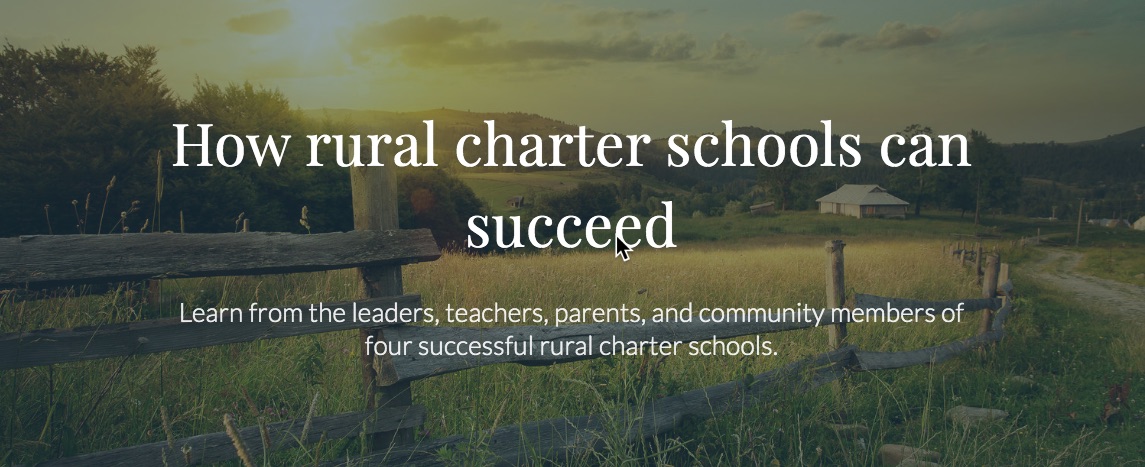Over the past year, Kelly Robson, Brandon Lewis, and I visited charter schools in four rural communities across the country. As we drove into town to speak with school and community leaders, we expected to uncover challenges that rural charter schools face which are distinct from those in urban areas — and we did. Our findings are included in a new website and highlight some of the constraints specific to operating a charter school in a rural setting.

But we also found many commonalities between what make these schools tick and the characteristics of successful schools in more urbanized settings. These commonalities were a useful reminder of some fundamental elements of a high-quality school that too often get lost in the shuffle.
First, these schools were exemplars of consistent, local leadership.
Those we spoke to made it clear that their school’s success was enabled by local champions with sustained relationships to the community. The school staff had the community’s trust and confidence. Moreover, in three out of the four schools we visited, the school leader had been in their role for ten or more years, a startling contrast to the national average tenure of just over four years. Schools’ local leadership, and the stability of that leadership, helped the schools grow local roots and sustain their missions and visions.
Second, school staff encountered their fair share of challenges but had a knack for creative problem solving.
From local district leaders breaking out into fist-fights and insurance companies concerned about mountain lions, to facilities constraints, budget and staffing issues, and enrollment fluctuations, the teachers and leaders we spoke to had all obstacles — big and small — that required agility and resourcefulness to overcome. Some schools changed authorizers to find stability or phased out grade levels in response to changing enrollment demand. Others created an impromptu adventure when a bus for a field trip never showed up or absorbed extra students into their classrooms for a day when multiple teachers were out sick. Staff “made it work” on a daily and sometimes hourly basis and were unafraid to make bold moves when needed. Necessity is the father of invention, and the school leaders we spoke to were used to finding creative solutions.
Third, a family-like atmosphere made students feel that teachers cared about them and were invested in their success.
When asked what enabled success, teachers and parents in every school we visited consistently mentioned the relationships between teachers, students, and parents. A parent in one community told us about a stressful time in her family, welcoming a new baby at the same time as her husband lost his job, and how the school knew and cared enough to provide a little extra support to her son. Teachers at another school spoke passionately about how they supported each other, shared responsibility for each other’s students, and how they believed the relationships between adults at the school filtered down to students. On more than one occasion, stakeholders described a school leader or a teacher as more of “a mom” than anything else. Each school we visited had created an atmosphere of mutual support, learning, and care.
These characteristics are by no means the exclusive domain of charter schools, or of rural schools. And they are hardly new “a-ha”s. But they are often overlooked amid granular discussions of education policy and practice.
Perhaps it takes a three-hour drive through the mountains of northern New Mexico or a horizon that is further than a few city blocks of high-rise buildings to remember. Or perhaps seeing something in an unfamiliar context helps us see it with fresh eyes. Either way, these rural charter schools offer an important reminder about the basic fundamentals of a successful school: dedicated and committed educators who have identified a need in their community, have the gumption and wherewithal to address it, and work diligently to build trusting relationships with the children and families they serve.
View our website, “Local Roots Take the Lead,” to learn more.
September 20, 2019
How Four Rural Schools Reminded Me of the Fundamentals of Quality Education
By Bellwether

Share this article